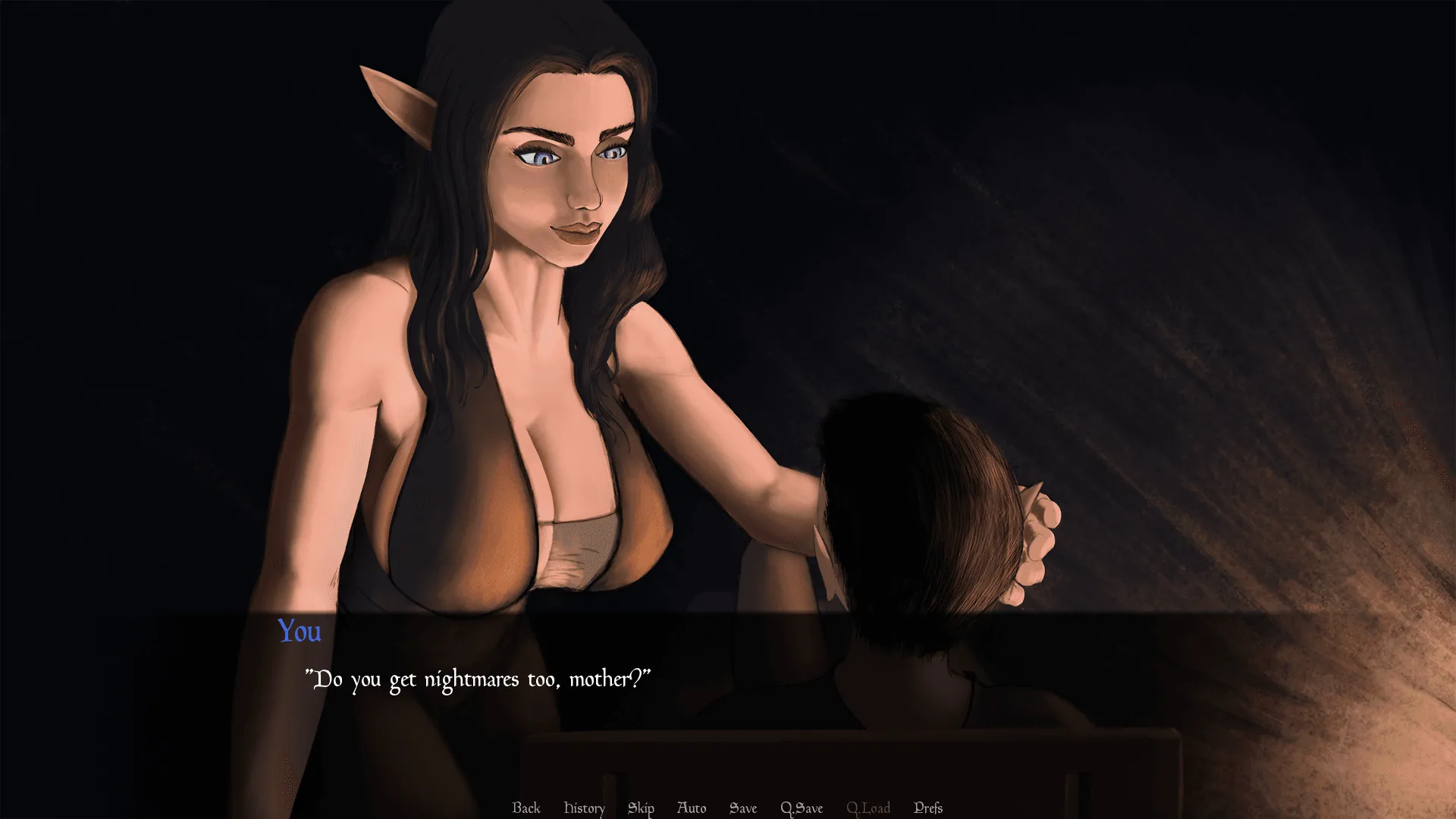
Love and Submission
Play Love and Submission
Love and Submission review
Master the mechanics and character relationships in this unique interactive experience
Love and Submission stands out as an engaging interactive narrative game that combines relationship-building mechanics with compelling character development. Players navigate complex social dynamics, make meaningful choices that affect story outcomes, and develop connections with diverse characters including Becky, Lily, Mira, and Caitlyn. Whether you’re new to the game or looking to deepen your understanding of its systems, this guide provides essential insights into gameplay mechanics, character interactions, and strategic approaches to maximize your experience. The game’s focus on choice-driven narratives and character development creates a unique experience that rewards exploration and thoughtful decision-making.
Understanding Love and Submission Gameplay Mechanics
Welcome to the heart of the matter! 🎮 Understanding the Love and Submission gameplay mechanics is your golden ticket to mastering this captivating world. It’s not just about clicking through dialogue; it’s about living a story where your decisions truly shape your reality. I remember my first playthrough, thinking I could just charm my way through every interaction. I was so, so wrong. The game’s intricate systems immediately pulled me in, and I realized this was a different kind of beast—a deeply engaging choice-driven narrative game where every “yes” or “no” carries weight.
Let’s break down these systems so you can step into this interactive drama with confidence and avoid the rookie mistakes I made. 😅
Core Gameplay Systems and How They Work
At its core, the Love and Submission gameplay mechanics are built on a foundation of time, attention, and stat management. Think of it as a delicate balancing act. 🎭 You’re not just a passive observer; you’re the main character navigating a complex web of daily life, responsibilities, and romantic pursuits.
The primary resource you manage is your Time Points. Each day, you have a limited number of actions you can take, represented by these points. Will you go to work to earn money? 💰 Visit the gym to improve your character’s physique? Or, most importantly, spend time with one of the captivating characters? This system forces you to prioritize, making your journey uniquely yours. I learned this the hard way when I spent a whole week in-game just hanging out at the bar, only to find my relationship with Becky had completely stalled because I never dedicated serious time to her.
Your progress is also tracked through a Stat System that operates in the background. These aren’t just numbers; they are a reflection of your character’s development and directly influence how other characters perceive and interact with you. Key stats include:
- Charisma: Affects your success in social and flirtatious dialogues.
- Confidence: Impacts your ability to make bold decisions and stand your ground.
- Kindness: Influences options that show empathy and care.
- Physicality: Affects certain story outcomes and character-specific interactions.
Pro Tip: Don’t try to max out every stat on your first run! Focus on a style that fits the character arc you want to experience. A confident, charismatic path leads to very different story beats than a kind, gentle one.
The interactive story progression is gated behind these stats and your relationship levels. You won’t unlock Lily’s more personal, vulnerable story moments, for example, until you’ve built up a sufficient level of trust (and possibly a specific stat threshold). It’s a brilliant way to ensure the story feels earned and authentic.
Character Relationship Dynamics and Progression
This is where the magic truly happens. The character relationship system is the pulsating heart of Love and Submission. ❤️🔥 It’s not a simple like/dislike meter; it’s a multi-layered, dynamic representation of your history and interactions with each person.
Each main character has their own personality, preferences, and boundaries. Building a relationship isn’t about always saying what you think they want to hear. Sometimes, challenging them or disagreeing respectfully can lead to a deeper, more meaningful connection. The relationship building mechanics are nuanced. Your standing with a character is influenced by:
- Key Story Choices: Major decisions that demonstrate your values and priorities.
- Consistent Attention: Regularly choosing to spend time with them.
- Dialogue Selection: Picking responses that align with their personality or your desired approach.
- Memory System: Characters remember your past promises and actions. Break a promise to Mira, and she will bring it up later, forcing you to rebuild that lost trust.
I still cringe thinking about the time I forgot a date I promised to Caitlyn. For the next several in-game weeks, she would subtly (and not-so-subtly) remind me of my flakiness, and it took a lot of effort to get back into her good graces. This character relationship system ensures that your words have lasting power.
To help you get started, here’s a breakdown of the core characters you’ll encounter:
| Character | Personality Traits | Relationship Unlock Conditions | Key Story Moments |
|---|---|---|---|
| Becky | Ambitious, Independent, Guarded | Consistently support her career goals; demonstrate reliability. | Helping her prepare for a major work presentation; the “Lakehouse Weekend” event. |
| Lily | Creative, Free-spirited, Emotionally Complex | Show appreciation for her art; engage in deep, philosophical conversations. | Visiting her secret art studio; the emotional “Gallery Opening” decision. |
| Mira | Intellectual, Witty, Secretly Vulnerable | Match her intellect in banter; discover and respect her hidden insecurities. | The “Library Discovery” scene; choosing sides in her personal conflict. |
| Caitlyn | Energetic, Playful, Seeks Excitement | Be spontaneous and open to adventure; pass early “fun” checks. | The “Amusement Park Dare”; the pivotal “Trust Fall” scenario. |
Understanding these dynamics is crucial because the relationship building mechanics are what ultimately unlock the game’s vast array of branching story paths. Your connection level acts as a key, opening up new, more intimate and dramatic chapters of each character’s personal narrative.
Making Choices That Matter: Decision Trees and Consequences
Welcome to the engine room of this choice-driven narrative game. 🧩 Every significant choice you make doesn’t just vanish; it gets logged into the game’s memory, creating a complex web of cause and effect. The game decision consequences can be immediate, or they can lie dormant for hours of gameplay before resurfacing in dramatic fashion.
The narrative structure is built on branching story paths. Think of it less like a straight road with occasional forks, and more like a sprawling tree where each branch leads to a unique canopy of possibilities. A single dialogue option in Chapter 2 might determine which of three different scenes you experience in Chapter 5.
Let me give you a real example from my own gameplay that perfectly illustrates these game decision consequences. Early in the game, you encounter a scenario where Becky and Lily are both vying for your attention on the same evening.
- The Choice: You must decide who to spend the evening with.
- The Immediate Consequence: The character you choose gets a significant relationship boost. The one you reject feels slighted, and their relationship meter takes a noticeable hit. This is the obvious outcome.
- The Long-Term, Branching Consequences:
- If you choose Becky: You unlock a scene where she opens up about her career anxieties. This establishes a foundation of trust. Much later, this allows you to give her pivotal advice during her “Lakehouse Weekend” crisis, potentially saving her career. However, Lily remembers being your second choice. This closes off her most vulnerable, trusting path for a long time, as she sees you as unreliable.
- If you choose Lily: You get invited to an impromptu art session, unlocking her creative side and starting her personal questline. This makes her “Gallery Opening” moment far more impactful. The trade-off? Becky, who values reliability above all, marks you down as flaky. It becomes much harder to gain her deep trust, and you may miss the chance to support her during a critical professional moment.
- If you try to please both (a special option with high Charisma): You might arrange a group outing. This avoids the major negative hit with either character but doesn’t give you the deep, one-on-one connection with either. It keeps both paths open but delays significant progression on either, demonstrating that playing it safe has its own game decision consequences.
This is just one example! The game is filled with these pivotal moments. The branching story paths mean that two players can have wildly different experiences, different arguments, different romantic moments, and even entirely different endings based on the chain of decisions they’ve made.
Strategic Insight: There are no universally “right” choices, only choices that are right for the story you want to tell. Embrace this! Don’t reload a save every time you get a negative reaction. Some of the most compelling narrative drama comes from repairing a damaged relationship or dealing with the fallout of a poor decision. It makes your personal journey through this interactive story progression feel genuinely yours.
Mastering the Love and Submission gameplay mechanics is about understanding that you are the author. The character relationship system is your palette, and your choices are the brushstrokes. By engaging deeply with the relationship building mechanics and thoughtfully navigating the branching story paths, you transform from a mere player into the co-writer of a memorable, emotional, and deeply personal interactive story. Now go on, your story is waiting to be written. ✍️
Love and Submission delivers a rich interactive experience that rewards players who engage thoughtfully with its mechanics and characters. By understanding the relationship systems, appreciating how your choices ripple through the narrative, and exploring the diverse character arcs available, you’ll unlock the full potential of what the game offers. Whether you’re pursuing specific character storylines or discovering all possible outcomes, the game’s branching narrative structure ensures that each playthrough can feel fresh and meaningful. Take time to experiment with different approaches, pay attention to character dialogue and reactions, and don’t hesitate to replay sections to explore alternative paths. The depth of Love and Submission lies in its commitment to player agency and character development, making it a worthwhile experience for those seeking narrative-driven interactive entertainment.


















